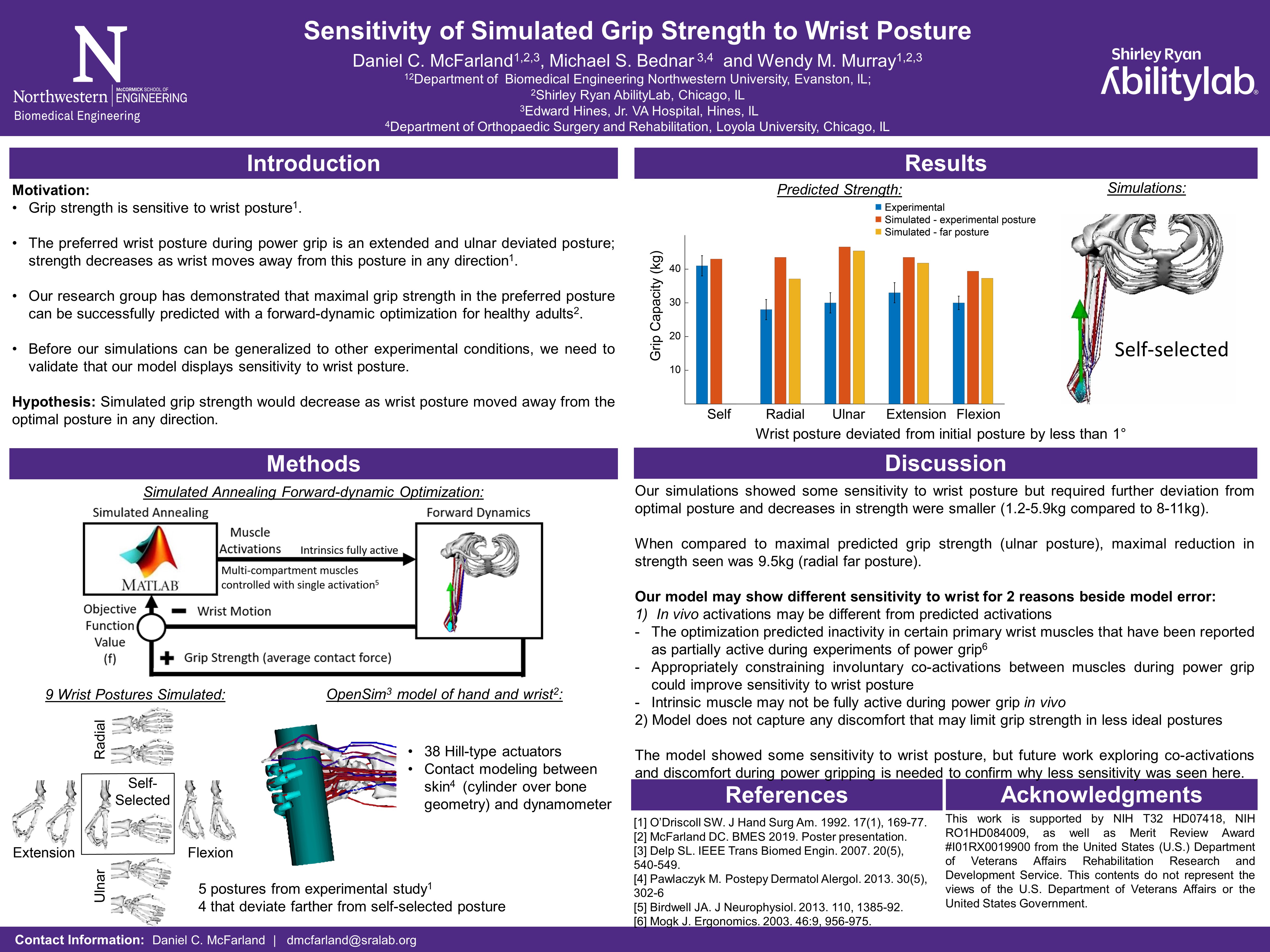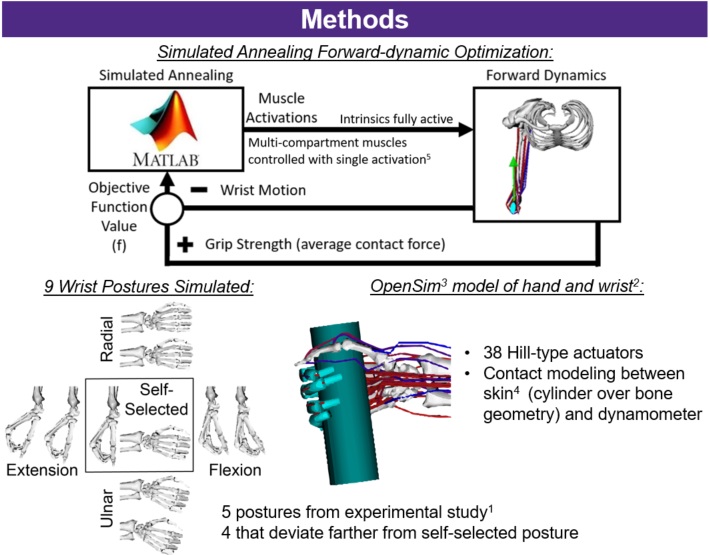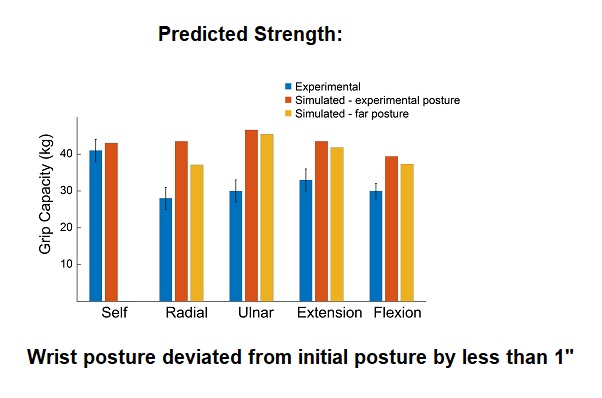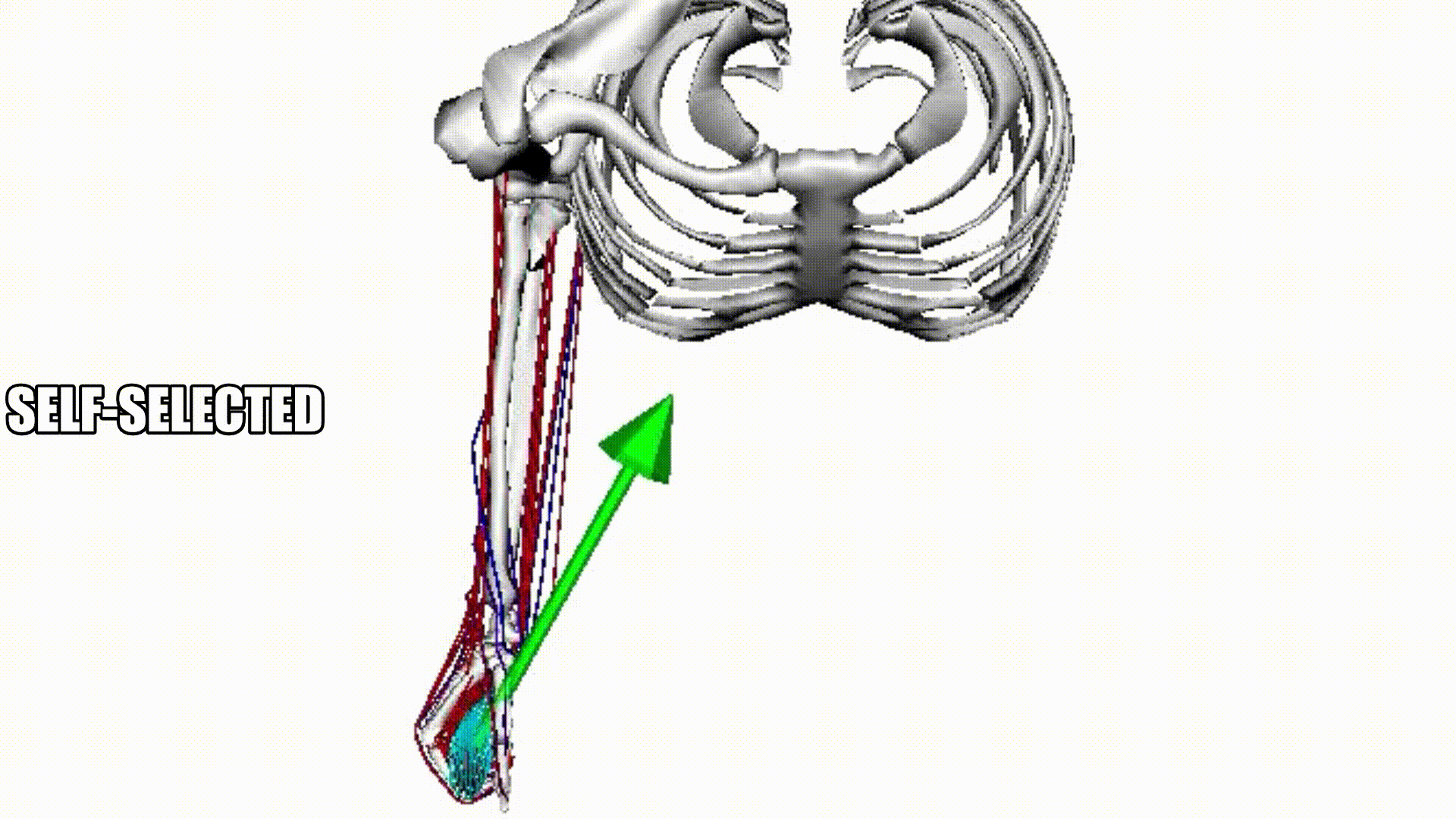Virtual 44th Meeting of the American Society of Biomechanics
Body
To view the poster larger, right click to open the image in a new tab while on Chrome.
Below the poster image is an embedded YouTube video that walks through the poster content.

Introduction
Body
Motivation:
- Grip strength is sensitive to wrist posture1.
- The preferred wrist posture during power grip is an extended and ulnar deviated posture; strength decreases as wrist moves away from this posture in any direction1.
- Our research group has demonstrated that maximal grip strength in the preferred posture can be successfully predicted with a forward-dynamic optimization for healthy adults2.
- Before our simulations can be generalized to other experimental conditions, we need to validate that our model displays sensitivity to wrist posture.
Hypothesis: Simulated grip strength would decrease as wrist posture moved away from the optimal posture in any direction.
Methods
Body

Results
Body

Simulations:
Body

Discussion
Body
Our simulations showed some sensitivity to wrist posture but required further deviation from optimal posture and decreases in strength were smaller (1.2-5.9kg compared to 8-11kg).
When compared to maximal predicted grip strength (ulnar posture), maximal reduction in strength seen was 9.5kg (radial far posture).
Our model may show different sensitivity to wrist for 2 reasons beside model error:
- In vivo activations may be different from predicted activations
- The optimization predicted inactivity in certain primary wrist muscles that have been reported as partially active during experiments of power grip6
- Appropriately constraining involuntary co-activations between muscles during power grip could improve sensitivity to wrist posture
- Intrinsic muscle may not be fully active during power grip in vivo
- Model does not capture any discomfort that may limit grip strength in less ideal postures
- The model showed some sensitivity to wrist posture, but future work exploring co-activations and discomfort during power gripping is needed to confirm why less sensitivity was seen here.
References
Body
[1] O’Driscoll SW. J Hand Surg Am. 1992. 17(1), 169-77.
[2] McFarland DC. BMES 2019. Poster presentation.
[3] Delp SL. IEEE Trans Biomed Engin. 2007. 20(5), 540-549.
[4] Pawlaczyk M. Postepy Dermatol Alergol. 2013. 30(5), 302-6
[5] Birdwell JA. J Neurophysiol. 2013. 110, 1385-92.
[6] Mogk J. Ergonomics. 2003. 46:9, 956-975.
Acknowledgements
Body
This work is supported by NIH T32 HD07418, NIH RO1HD084009, as well as Merit Review Award #I01RX0019900 from the United States (U.S.) Department of Veterans Affairs Rehabilitation Research and Development Service. This contents do not represent the views of the U.S. Department of Veterans Affairs or the United States Government.
AMA citation for this poster presentation:
McFarland DC, Bednar MS, Murray WM. Sensitivity of Simulated Grip Strength to Wrist Posture. Virtual 44th Annual Meeting of the American Society of Biomechanics Conference. August 4-7, 2020.
